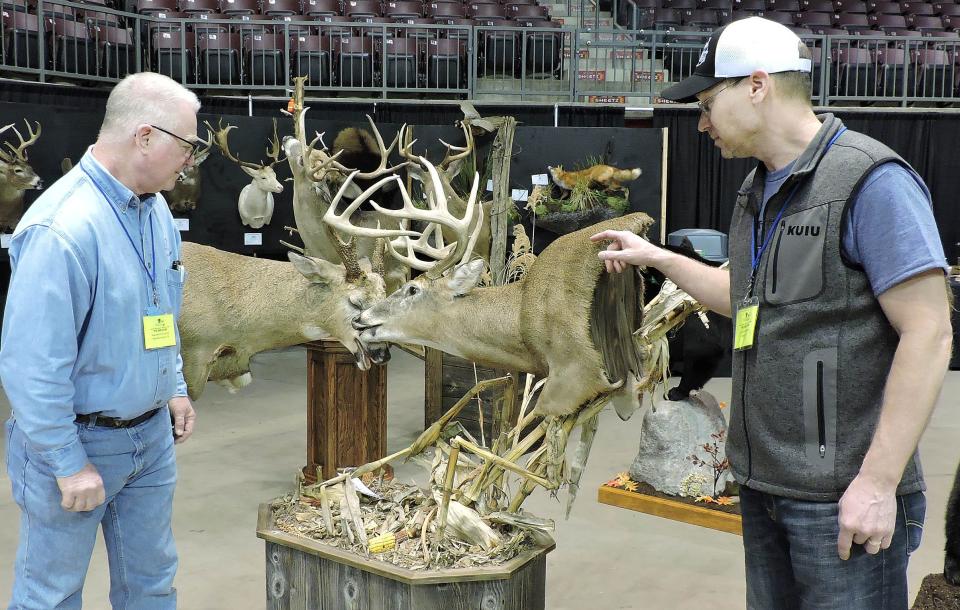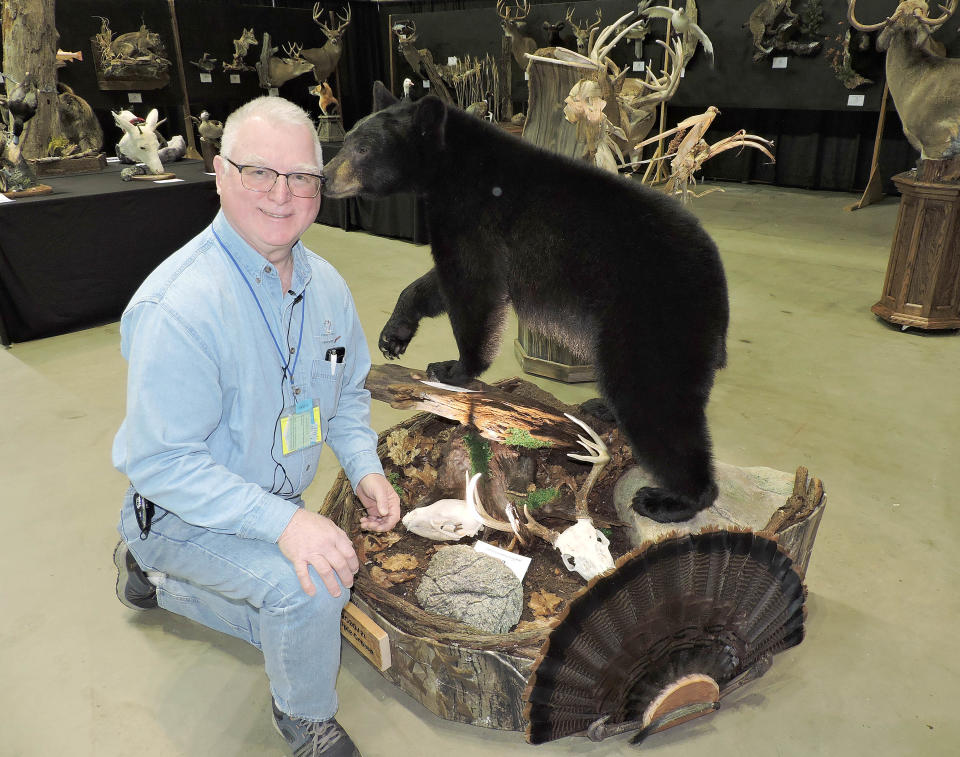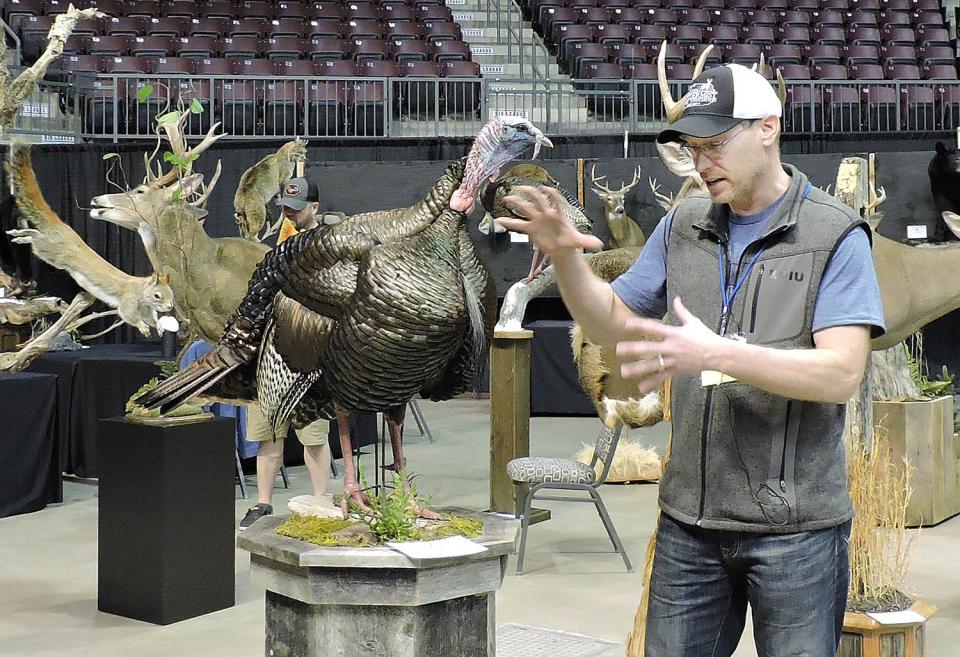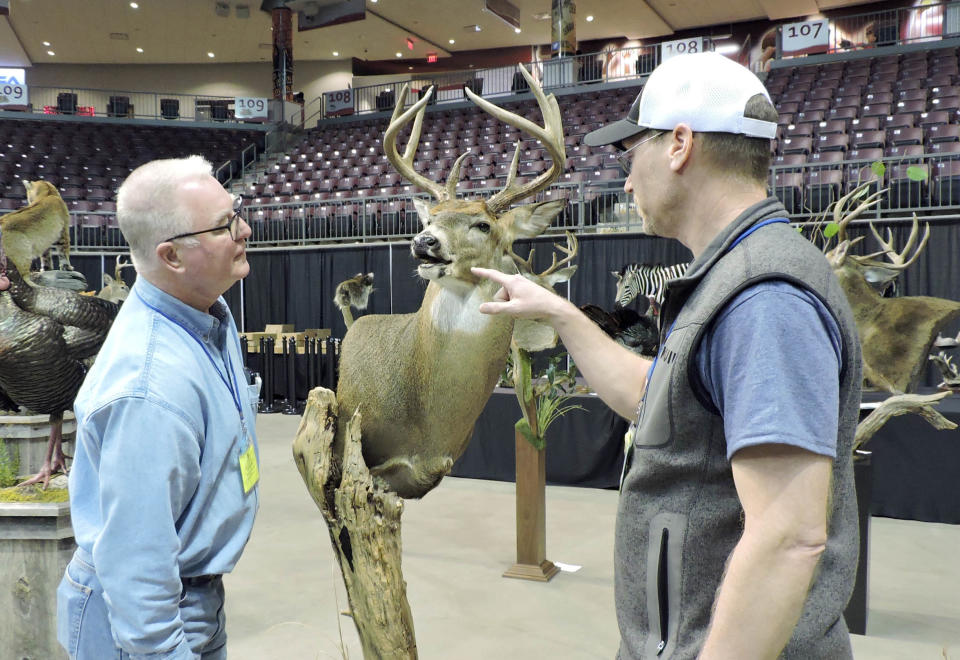What do you do with your trophy animal? PA experts weigh in
Part of the thrill of hunting and fishing is never knowing what you'll encounter. If you end up getting the deer, turkey or fish of a lifetime, do you know what to do to preserve that memory?

The answer is planning ahead and knowing who is available to handle your taxidermy needs.
Leaders in the industry gathered March 29 through April 1 for the Pennsylvania Taxidermist Association’s annual competition and trade show at the Kovalchick Convention and Athletic Complex in Indiana, Pennsylvania.
Amateurs, professional and master taxidermists competed with a wide range of animals, from deer, turkey, squirrels, bison, mountain lions, bob cats and a variety of fish. Many of the judges are world champion taxidermists.
“We bring in the best of the best,” said Jens Jorgensen, the association’s president from Mercer. The judges use flashlights to study the eyes, fur, feathers and mouths of the mounts. Their work is precise and nuanced, and they critique competitors carefully. “They can certainly humble you,” he said.
There are two main goals of the event: competition and learning.
“It’s nice to be able to come and compete, compare yourself to your peers,” he said. “Our goal every year is to continue to build the quality of the taxidermists across the state and this is a good way to do it."

“You are not compared against your fellow peers, you’re compared against a live animal,” said Ray Kowalski, association vice president from New Kensington. The goal of the taxidermist is realistic artwork.
The individual scores are then ranked with other taxidermists to determine the winners.
What you need to know
Advice from the experts:
“If you don’t already have a taxidermist, start doing your research before you get that fish, bird or animal,” Jorgensen said. “What I see is that somebody will kill that animal of a lifetime or fish of a lifetime and want to get it mounted and then all of a sudden it’s a panic."
Hunters and anglers should be looking at examples of taxidermy and thinking about what they would like to have done if they are lucky enough to get a trophy.
There is a list of taxidermists on the Pennsylvania Taxidermist Association’s website.
The taxidermist can explain how to wrap and freeze a fish or how to place the head of a bird so it doesn’t get damaged.
For tagging a deer, a long safety pin is best to attach the tag to the ear. Don’t use a hunting knife as it can make a large hole the taxidermist will need to repair.
For hunters who travel, research regulations for taking animals across state lines and through areas that have deer with Chronic Wasting Disease. The animal may need to be skinned near the hunting area instead of bringing it home.
Kowalski said it’s tempting for hunters who get an animal like a bear to hold on to it for a couple days to show friends and family, but that hurts the quality of the hide as the animal can quickly start decomposing.

“The completed piece that we do for a customer is only as good as how quality the specimen is they bring us,” Jorgensen said. “If they bring us junk, we can polish it up the best we can, but it’s going to look like a polished piece of junk."
For example with a deer, hunters should avoid dragging the animal over rough terrain where it could lose hair and avoid putting rope around the deer’s neck as the rope could damage the fur, too.
“Field care is number one,” Jorgensen said.
Bear cub check ups: Pennsylvania's black bears get healthy report during winter den checks
One for the record books: Monster buck killed in Pennsylvania missed state record by a hair
More: Hunters in Pennsylvania shot estimated 12% more deer in 2022-23 seasons than year earlier

Inflation impacts taxidermy
Some supplies for taxidermists are tougher to get these days, such as artificial eyes, and prices have been driven higher because of inflation.
“It could take longer to get your (finished) piece back,” Kowalski said.
When it comes to preserving an animal, look beyond the price, Jorgensen said. “Look at their quality first and then cost.”
Taxidermy is a skilled trade where the artists have overhead costs and spend plenty of hours working on each piece. “With a deer we have a couple hundred dollars just in supplies before we make any money,” he said.
“If you’re getting something mounted, it’s to preserve that memory of that experience for your lifetime. Do you want it to be pretty, a very nicely done thing you are going to stare at for the rest of your life or do you want it to be so-so and regret that you didn’t take it somewhere else?” Jorgensen said.
Cost estimates for mounts
For a shoulder mount for a deer, a hunter should expect to pay $550 to $700. Fish average $20 to $25 per inch regardless of species. For a full mount of a turkey, Jorgensen said the cost starts out at about $1,000.
“Get together with your taxidermist and up come up with a good plan and let the artistic abilities of that taxidermist flow,” he said.
Shows like this one reveal the variety of mounts and opportunities those who enjoy the outdoors can have with fish and game. Next year’s state taxidermist championship is scheduled for March 23 at the Kovalchick Convention and Athletic Complex in Indiana, Pennsylvania.
Brian Whipkey is the outdoors columnist for USA TODAY Network sites in Pennsylvania. Contact him at bwhipkey@gannett.com and sign up for our weekly Go Outdoors PA newsletter email on this website's homepage under your login name. Follow him on Facebook @whipkeyoutdoors ,Twitter @whipkeyoutdoors and Instagram at whipkeyoutdoors.
This article originally appeared on Erie Times-News: Pa. Taxidermist Association officials highlight state's top mounts
